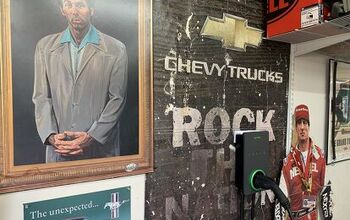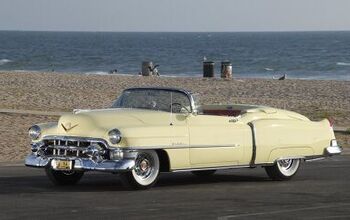Easier Said Than Done: Restarting the Automotive Industry

As the global health crisis pivots toward becoming an economic one, the automotive industry is understandably eager to know when it can begin producing cars again. The situation isn’t going to be as easy as throwing open a few breaker boxes and giving the thumbs up. A mile-long list of problems, many of which lack easy answers, will first have to be tackled before things return to normal.
Supply chains will be slow to move — and potentially severed — as other nations wait longer to walk back social distancing measures. Not all factories will resume operation at the same time, and not all parts suppliers or shipping agencies will have made it through the coronavirus pandemic intact. It’s also uncertain how quickly customers will return to the market. In tougher financial times, customers may remain hesitant in making large purchases; meanwhile, localized quarantines will undoubtedly continue suppressing sales in certain markets. Then we have the elephant in the room — the vast amount of money this colossal reboot is going to require.
According to Automotive News, a coordinated restart may be the answer. At the very least, it’s a solution that’s gathering support, and it has a precedent. Back when COVID-19 was just starting to break out of China, Japan formed a council designed to help keep the automotive industry one step ahead of the pandemic. While concerned with establishing safe practices amid the outbreak, its main goal was helping to manage supply chains and ensure Japanese manufacturers were better prepared to resume production.
Many automakers are enacting similar programs internally, with talk of coordinated national — or even global — product relaunches gathering steam. “You’re talking about starting up 50 or so major auto plants at the same time,” explained Dietmar Ostermann, a U.S. automotive advisory leader at PwC who is working with auto companies across North America. “Going from zero back to 100 [percent], all at once. That’s never been done.”
That’s not strictly true. When the U.S. automotive sector transformed into the “Arsenal of Democracy” in 1941, the biggest automakers all swapped to producing weapons of war to quell advancing Axis armies. The same was true of their subsidiaries and numerous independent parts suppliers. Eventually, the government mandated that no new vehicles could be sold to regular civilians and all unsold automobiles were put into storage. But even then, smaller factories stayed in operation to manufacturer replacement parts for the vehicles already in operation. While not a direct comparison to modern times, the industry still quickly reverted back to manufacturing automobiles in 1945 — a monumental task made slightly easier with the surplus of old models.
“Consider what happens just in the normal course of a model launch — how many supply chain hiccups and problems and delays,” Ostermann continued. “And then consider that almost every auto plant has more than one line and multiple models. It will be that times 50.”
Unlike the 1940s, American factories have grown more complex and are now plugged into global supply chains. This may require industry leaders to come together to collaborate. However, there are questions about the legality of this. While the federal government can stack the deck any way it wants during the crisis, a wholly cooperative automotive sector is technically illegal.
From Automotive News:
Julie Fream, CEO of the Original Equipment Suppliers Association, said last week her organization has approached U.S. Trade Representative Robert Lighthizer and U.S. Secretary of Commerce Wilbur Ross with a letter asking them to consider having those discussions.
Because of antitrust laws, such industrywide production planning could not be orchestrated by competing companies, Fream noted.
“If that was possible and [the Trump administration] wanted the industry to come together to have that dialogue, I’m sure they would,” she said.
“But it’s got to be supported at the federal government level before we even think about how we would do that.”
This raises all kinds of questions about how involved the government should be in a reboot, and what kind of precedent this sets in making the United States a command economy (on a presumably temporary basis). We’re already through the looking glass in treating the outbreak as if it’s a wartime scenario. State-mandated shutdowns backed by the federal government have put the U.S. in a unique situation, and it’s not unreasonable to think the Trump administration would support a coordinated restart.
Still, even with a good plan in place, it could be a difficult road for the industry. PwC estimates at least 12 large U.S. suppliers were already facing financial woes going into 2020 as a result of the prolonged UAW strike. They may not last through the year, to say nothing of the multitude of smaller suppliers that are in even worse shape to weather a prolonged storm. Mid-sized trucking firms are also expected to start going out of business (or swap to delivering essential goods).
“Many of them won’t be around,” Ostermann said. “A $5 billion auto supplier in America works with 50 to 100 inbound carriers. Some of these carriers may be big, but many of them are small businesses just running one to 100 trucks.
“They’re not sitting around waiting for the auto industry to come back — some of them are out moving groceries and medical supplies now, I predict. And some of them will simply go out of business in the coming weeks for lack of cash.”
Meanwhile, automakers will still be competing to see who gets first dibs on parts may butt heads on procuring raw materials. Suppliers will come out on the other side of this fewer in number. Steel producers have already lessened output to cope with the idled economy. This will raise prices at a time when factories really can’t afford it, and it’s unlikely they’ll be able to offload that cost onto consumers in a manner that’s equally budget-conscious.
Then we have the issue of continued social distancing measures. When factories reopen, they’ll presumably be subject to rules about how closely people can work. This could reduce on-site staff to a large degree, stifling production numbers and leaving many without a paycheck. Combine that with a suddenly high unemployment rate in other sectors and the road to recovery looks long and arduous without a COVID-19 vaccine (or the country collectively throwing up its arms and getting back to work, plague be damned). Obviously, the latter solution comes without accompanying risks.
As for the restart timeline, there isn’t one. However, former Ford CEO Mark Fields, now working as senior adviser with TPG Capital, said things must be addressed soon to avoid a catastrophe. “The issue is going to be probably between 30 and 60 days from now,” he said last week. “Every supplier is going to be facing a cash crunch because they’re the ones who are going to have to front the labor, [be] buying the material, paying for the logistics to bring up their assembly lines.”
[Image: FCA]

A staunch consumer advocate tracking industry trends and regulation. Before joining TTAC, Matt spent a decade working for marketing and research firms based in NYC. Clients included several of the world’s largest automakers, global tire brands, and aftermarket part suppliers. Dissatisfied with the corporate world and resentful of having to wear suits everyday, he pivoted to writing about cars. Since then, that man has become an ardent supporter of the right-to-repair movement, been interviewed on the auto industry by national radio broadcasts, driven more rental cars than anyone ever should, participated in amateur rallying events, and received the requisite minimum training as sanctioned by the SCCA. Handy with a wrench, Matt grew up surrounded by Detroit auto workers and managed to get a pizza delivery job before he was legally eligible. He later found himself driving box trucks through Manhattan, guaranteeing future sympathy for actual truckers. He continues to conduct research pertaining to the automotive sector as an independent contractor and has since moved back to his native Michigan, closer to where the cars are born. A contrarian, Matt claims to prefer understeer — stating that front and all-wheel drive vehicles cater best to his driving style.
More by Matt Posky
Latest Car Reviews
Read moreLatest Product Reviews
Read moreRecent Comments
- Bd2 Even Lexus is feeling the burn of not being able to compete in the e-ATP arena.
- TheEndlessEnigma The pics look great, with this being a manual this is a very enticing listing. The mention of snow tires does have me wondering what the condition of frame/underbody is - as with any car coming from the snowbelt.
- TheEndlessEnigma Let's fix that headline, shall we? "It Turns Out That Car Buyers Aren’t as Hot on EVs as Ford Had Hoped". It's not just Euroweenie car buyers that aren't all lathered up to buy an EV, it's the car buying public in general.
- Dave M. Get rid of anything 4 cylinder. I know a lot can be done with them, but I have occasion daily with luxury cars and whether it's Mercedes, BMW or any other luxury or semi-luxury brand, 4 cylinders (turbo, supercharged) still sound like an economy car.
- Kosmo Resume the CTS V Wagon with 6MT!!!


































Comments
Join the conversation
For those of us who survive this plague, and if we and our loved ones kept our lives, we are lucky, the world will be a very different place. I’d say every day this quarantine continues, and like most people, I really don’t know enough FACTS as to whether it’s essential and worth the cost, everyday the economy is closed will add 5 to 25 days in recovery time. A part as simple as a AC Drain hose or a knob... if the small suppler goes out of business, you can’t complete the car. It’s not as simple as snapping your fingers and saying “make masks and PPEand ventilators” As with most things, it takes time to build and sustain an enterprise or o life. But it can be destroyed very quickly, due to war, lack of oxygen, or lack of money
cprescott are you also a Rand Paul voter and a gold bug? Have fun watching FOX and friends